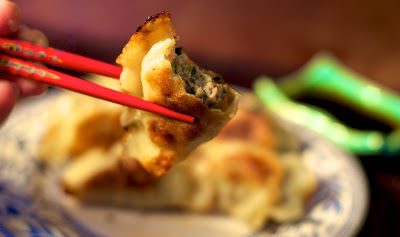UGLY PIE MAKERS, unite! I barely have the patience to bake, much less make my creations look pretty. If you’re like me, keep reading. Crostata is for us.
The (ahem) beauty of crostata is that it’s meant to look all Frankenstein-y and whatnot. Short of a square head and electrodes, it’s still stitched together with quick and easy pleats that don’t even attempt to sew up the whole deal. It’s a rustic, time-saving answer to that annoying friend of yours who pulls off a perfect lattice top with a few cutout curlicues to boot.
 This crostata happens to be an excellent vehicles for black truffles. For the pastry, I used Ina Garten’s recipe, which is easy and food processor-friendly.
This crostata happens to be an excellent vehicles for black truffles. For the pastry, I used Ina Garten’s recipe, which is easy and food processor-friendly.Filling:
3 – 4 pears, peeled, cored, and sliced into chunks
1/4 tsp lemon zest
Topping:
1/4 cup flour
1/4 cup granulated sugar
1/4 tsp kosher salt
1/4 tsp cinnamon
4 tbsp cold butter (1/2 stick), diced
Crust:
1 cup flour
2 tbsp granulated sugar
1/4 tsp kosher salt
1/4 pound (1 stick) cold butter, diced
2 tbsp ice water
1. To make pastry crust, combine flour, sugar, and salt in food processor. Add diced butter and pulse until pea-sized. Pour in ice water and process until mixture has nearly formed a mass of dough but not quite. Remove to a well-floured surface and knead until smooth, then roll into a foot-long cylinder. Wrap and refrigerate for 1 hour.
2. Mix pear chunks and zest in a bowl.
3. To make pastry topping, combine flour, sugar, salt, and cinnamon in food processor. Pulse and add butter. Process until crumbly. Set aside.
4. Pre-heat oven to 450 degrees.
5. Remove dough cylinder from refrigerator to a well-floured surface and slice into 6 equal portions. Form each portion into a ball and roll out into a 6-inch diameter pastry circle. Place on a baking sheet.
6. Dollop cut-up pears on each pastry. Sprinkle with a handful of topping. Bundle up pastry by lifting and pleating. Sprinkle exposed pear filling with more topping.
7. Bake 20 – 30 minutes, until golden and bubbling. Remove from oven and allow to cool a few minutes.
8. Shave black truffles over crostata while still warm and serve immediately with a scoop of vanilla ice cream.






.jpg)













